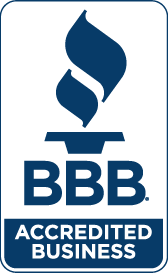Business Acquisitions

Vital, Basic First Steps of a Business Acquisition
William J. Amann, Esq.
AMANN BURNETT, PLLC
Drafting a Teaser Summary
Before you put pen to paper (euphemistically) there several, basic questions you and your client need to have answered up front. They include but are not limited to the following:
- What, specifically, are you really buying?
- Are you an outsider or insider buying and existent business?
- Corporate Record Review (formation docs, leases, pension plans, employment agreements) and Financial
- Is real estate involved?
- Are shares being sold or transferred?
- What are the business assets? Inventory? Good-will?
- Value of assets?
- The human Employees? Managers? Vendors? Customers? Transition communications and planning.
- Is financing involved?
- Who’s doing what and when?
- Other considerations: Non-compete covenant? Insurance
In short, the starting point in drafting any checklist or strategy memorandum is to sit and think about the business, how it operates and then follow each thought through to the next, most likely legal or practical issue. Ask questions, get answers, document your steps, get organized.
Creating a Non-Disclosure Agreement
“[M]ost jurisdictions do not limit the scope of noncompetition agreements to trade secrets or confidential . . . information.” Sys. & Software, Inc. v. Barnes, 886 A.2d 762, 764 (Vt. 2005).
Covenants not to compete may serve other legitimate ends as well, including to guard against a competitor’s misappropriation of the time and expense the covenantee has invested in developing a product. See, e.g., Oberto Sausage, 2011 WL 939615, at *5; Bakers’ Aid, 730 F. Supp. at 1215.
Cf., the New Hampshire Supreme Court has stated that the law does not look with favor upon contracts in restraint of trade or competition. Merrimack Valley Wood Prods. v. Near, 152 N.H.
192, 197, 876 A.2d 757 (2005). Such contracts are to be narrowly construed. Id. Restrictive covenants are, however, valid and enforceable if the restraint is reasonable, given the particular circumstances of the case. 155 N.H. 389 Id. A covenant’s reasonableness is a matter of law for this court to decide. Concord Orthopedics Prof. Assoc. v. Forbes, 142 N.H. 440, 443, 702 A.2d 1273
(1997). In analyzing NDA’s, NH Courts typically ask whether the restriction is greater than necessary to protect the legitimate interests of the employer, whether the restriction imposes an undue hardship upon the employee and whether the restriction is injurious to the public interest. Merrimack Valley, 152 N.H. at 197, 876 A.2d 757; ACAS Acquisitions (Precitech) Inc. v. Hobert, 155 N.H. 381, 923 A.2d 1076, (2007). See cases such as Contour Design v. Chance Mold Steel, cv-09-451-JL. (D.N.H. 12-16-11); Raymarine v. Argonaut Computer, cv-02-021-B (D.N.H. 8-1-02).
Conducting Due Diligence – Assembling a Team of Experts and Due Diligence Request Lists
- Financial: Accounting and Tax (they’re different).
- The Closing Check-list (for commercial real estate)
Existing title information
Existing survey and surveyor’s report or certificate
As-built plans and specifications
Any not-of-record agreements affecting the property
Existing permits and approvals
Notices of violations
Disclosure of pending or threatened litigation or of known conditions
Disclosure of pending or threatened taking or condemnation by eminent domain
Disclosure of any pending or proposed betterments or assessments
Condominium or cooperative documents
Existing management contracts
Existing service contracts
Existing engineering or consultant reports
Materials from Seller (If applicable to property and in Seller’s possession or control)
Guarantees and warranties
Schedule of equipment included in deal
Rent roll and copies of all leases, list of known defaults or delinquencies, etc.
Equipment leases (including elevator leases)
Title
- Commitment for Title Insurance
- Exception Documents
Survey
- ALTA Survey
- Surveyor’s Certificate
Physical Site Inspection
- Environmental Site Investigation
- Wetlands/Rivers Identification
- Historic/Archeological Investigation
- Endangered Species Investigation
- Geotechnical Investigation
- Building and Building Systems Inspection
Building File and Municipal Records
- Building File (or “Jacket”) Review
- Conservation Commission
- Assessor’s Property Record File (or “Card”)
- Other (Fire Department, Health Department, Planning Board, Zoning Board of Appeals, )
Permits (Real Estate related: zoning, wetlands, traffic, etc.)
- Zoning Approvals (Variance, Special Permit, Site Plan Approval)
- Wetlands— Orders of Conditions and Certificates of Compliance
- Curb cut Permits
- State Highway Access Permit
- Sewer Connection Permit or evidence of self-certification
- MEPA Environmental Impact Report and Secretary’s Certificate
- Industrial Waste Discharge Permit
- Building Permit/Certificate of Occupancy
- Air Emissions Approvals (usually required only for larger projects; includes Plan Approvals; Title V Operating Permits, )
- NPDES Permit (discharge of pollutants into federal waters)
- Other Federal Permits
Litigation and Violations
Special Laws
Leases
- Lease Abstracts
- Estoppels
Miscellaneous Unrecorded Agreements Affecting Real Estate





